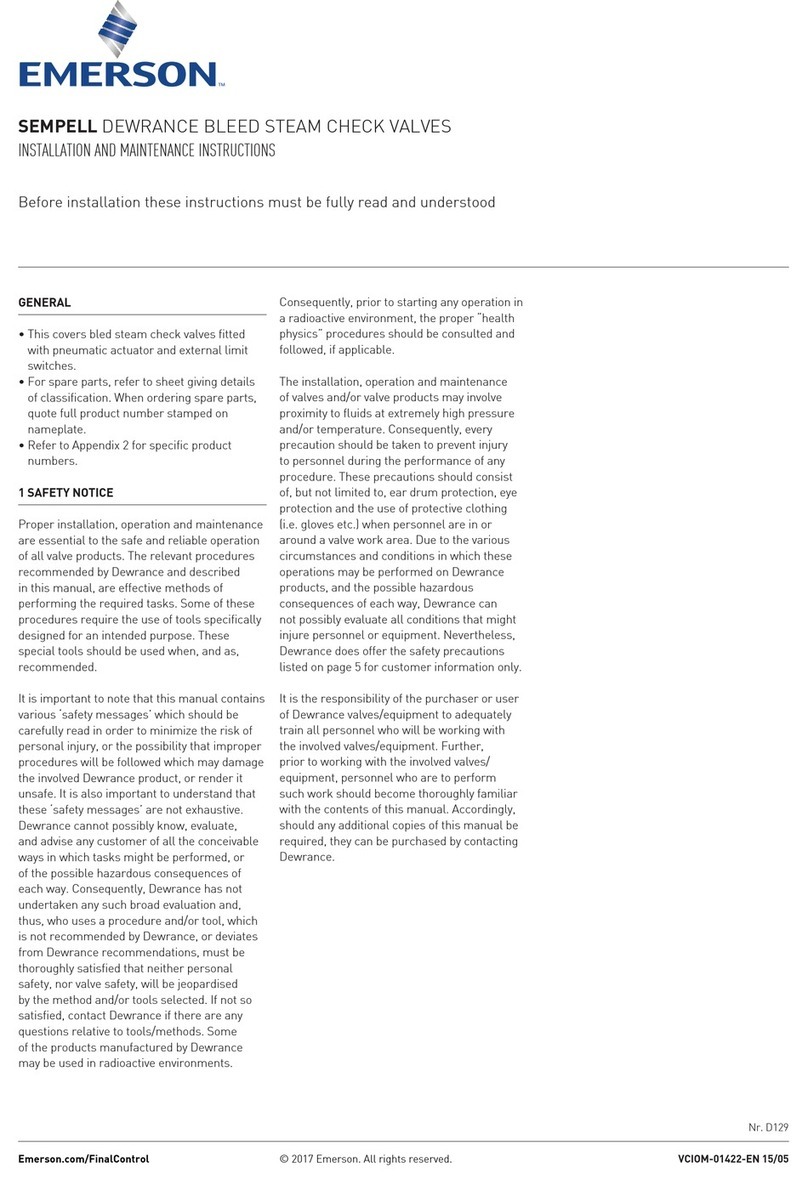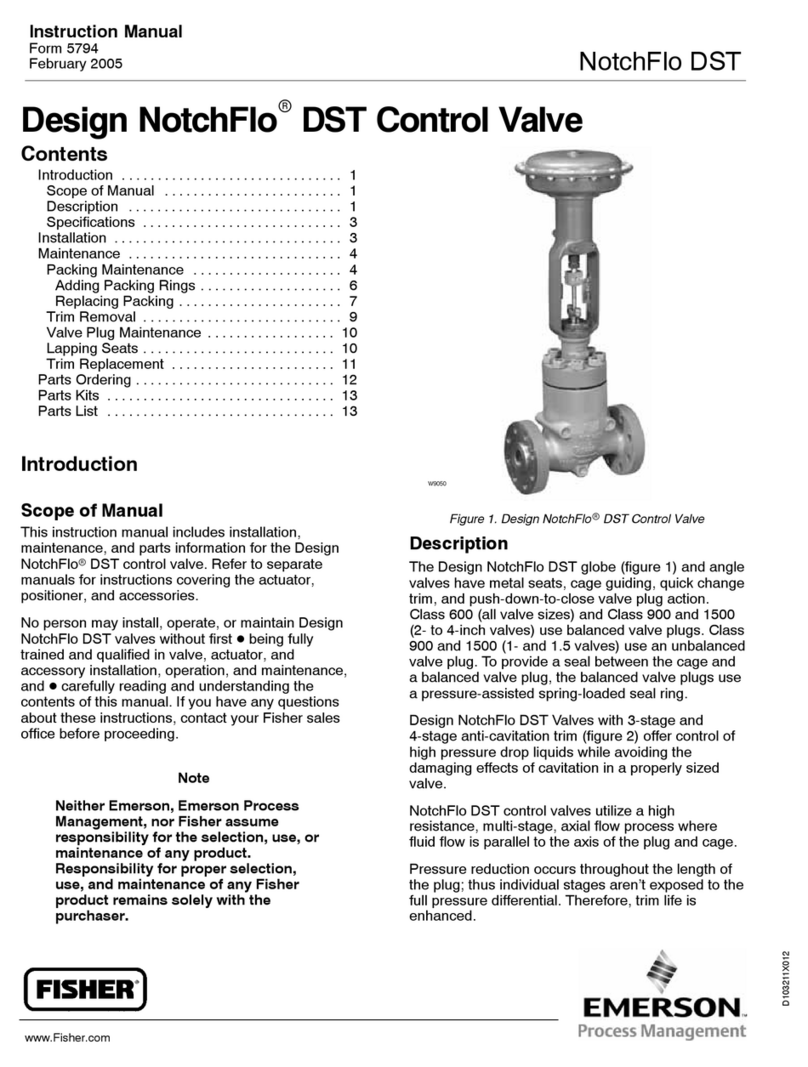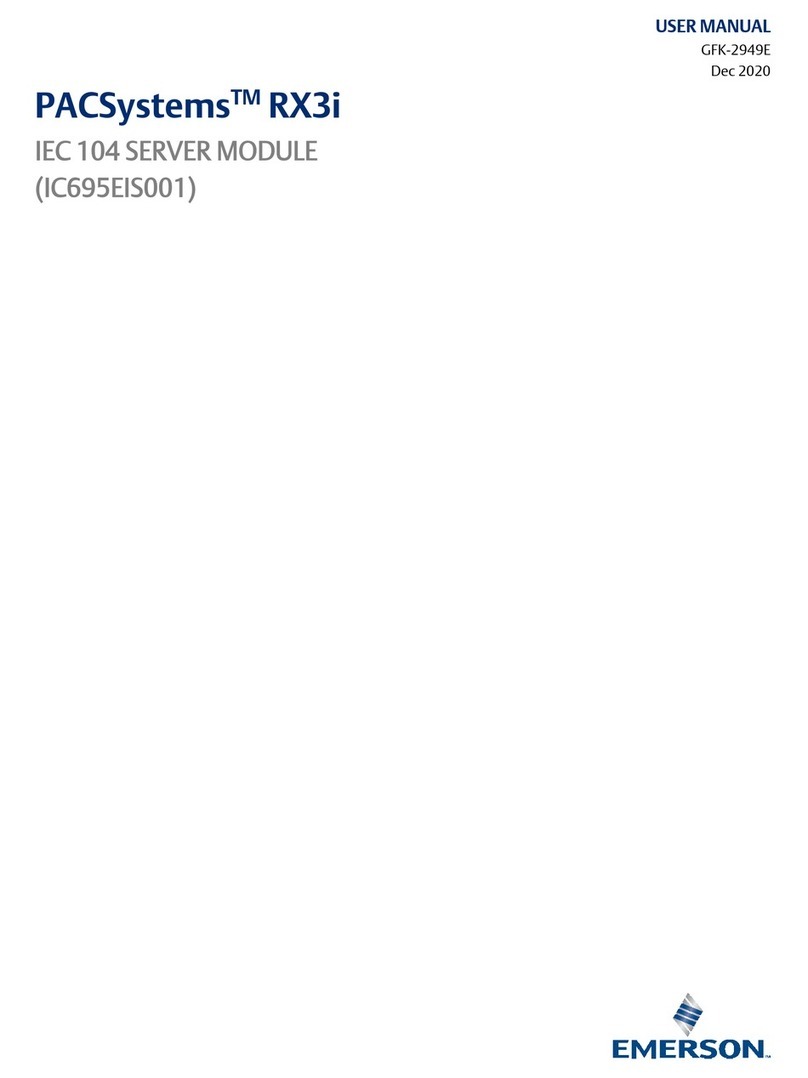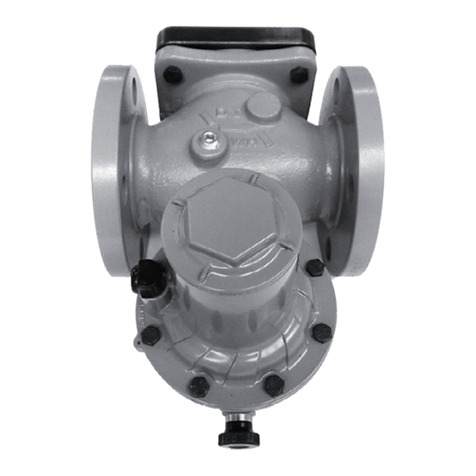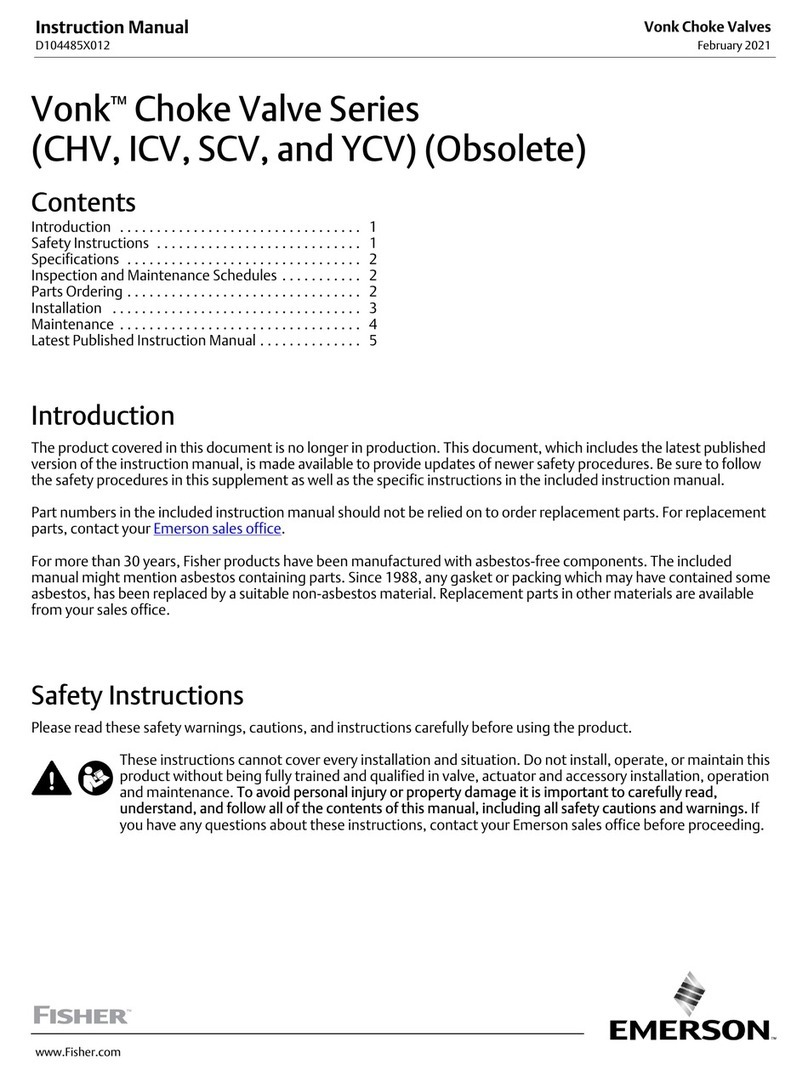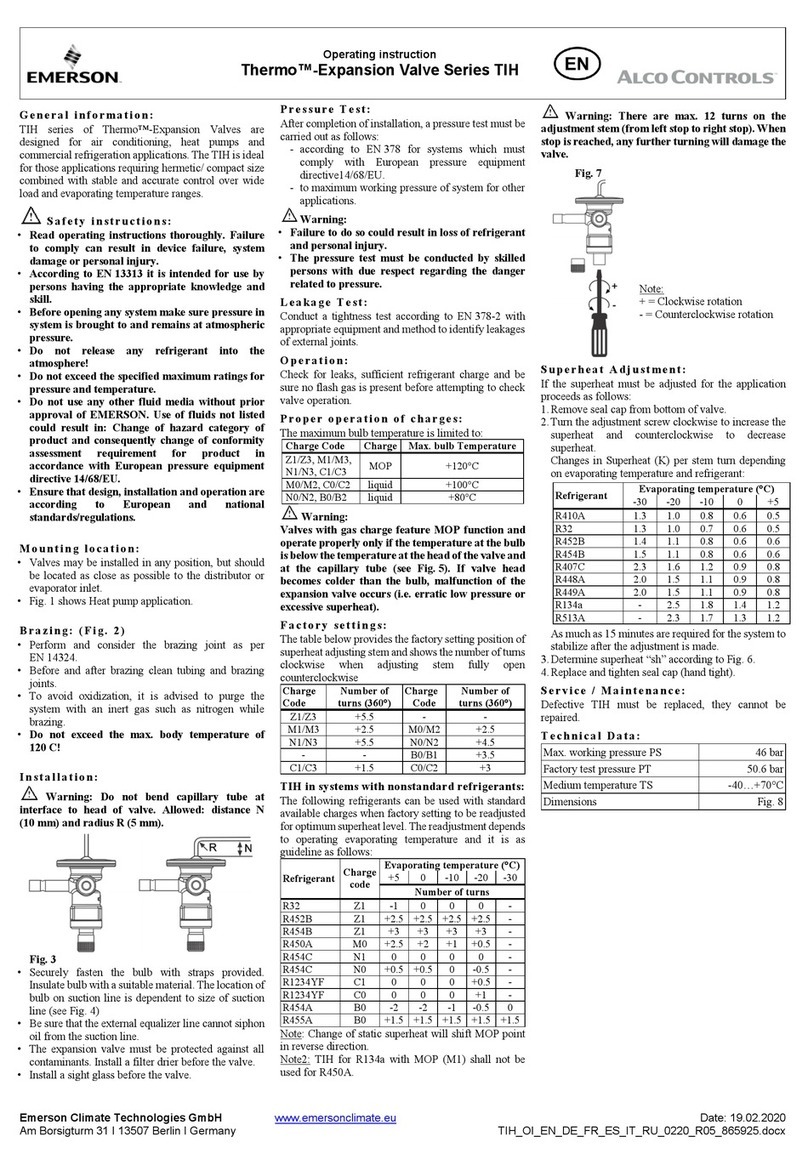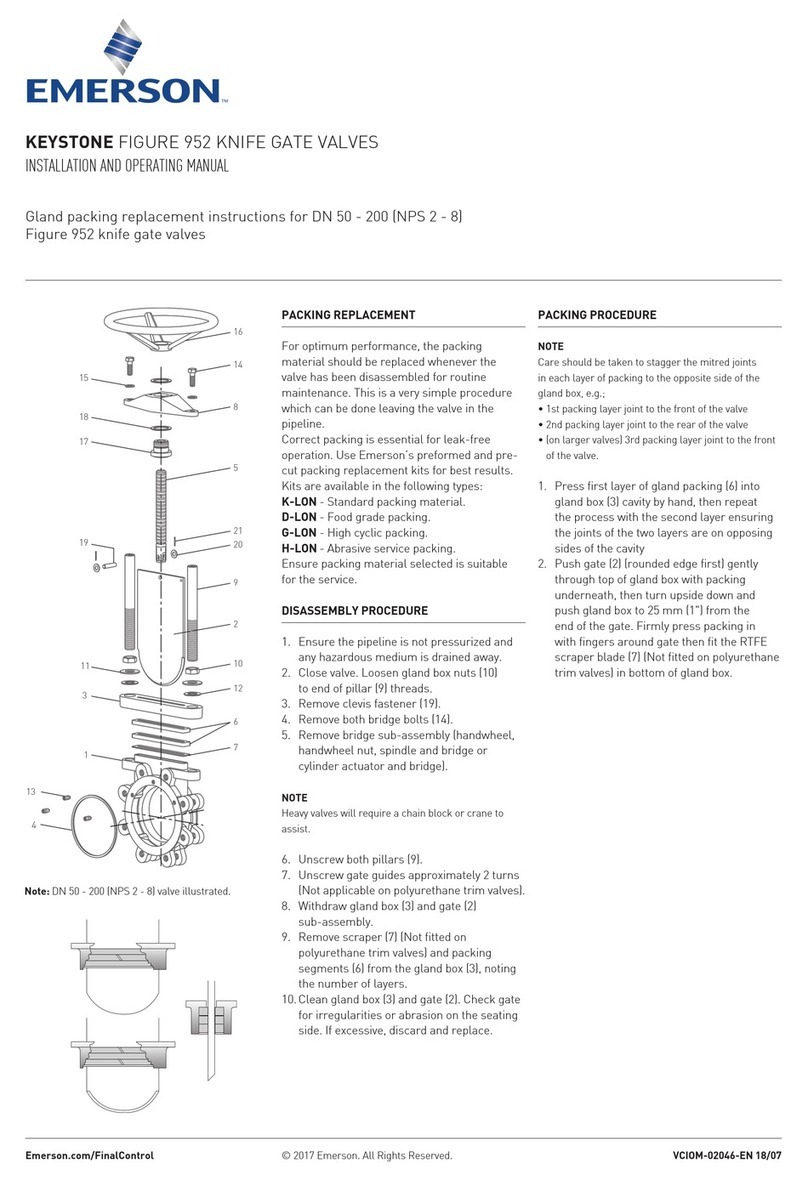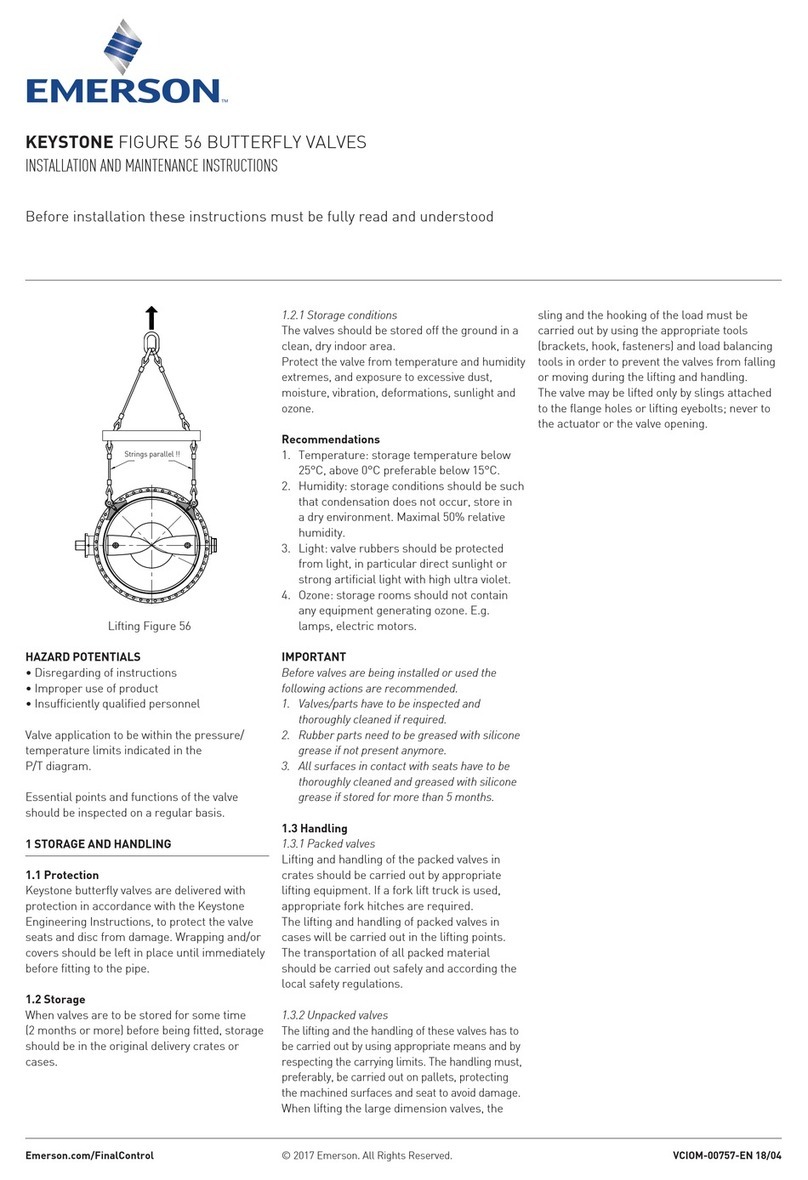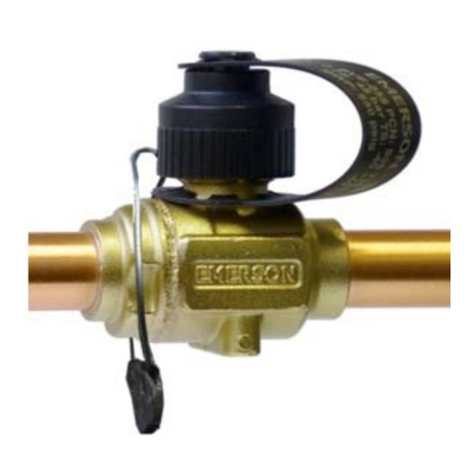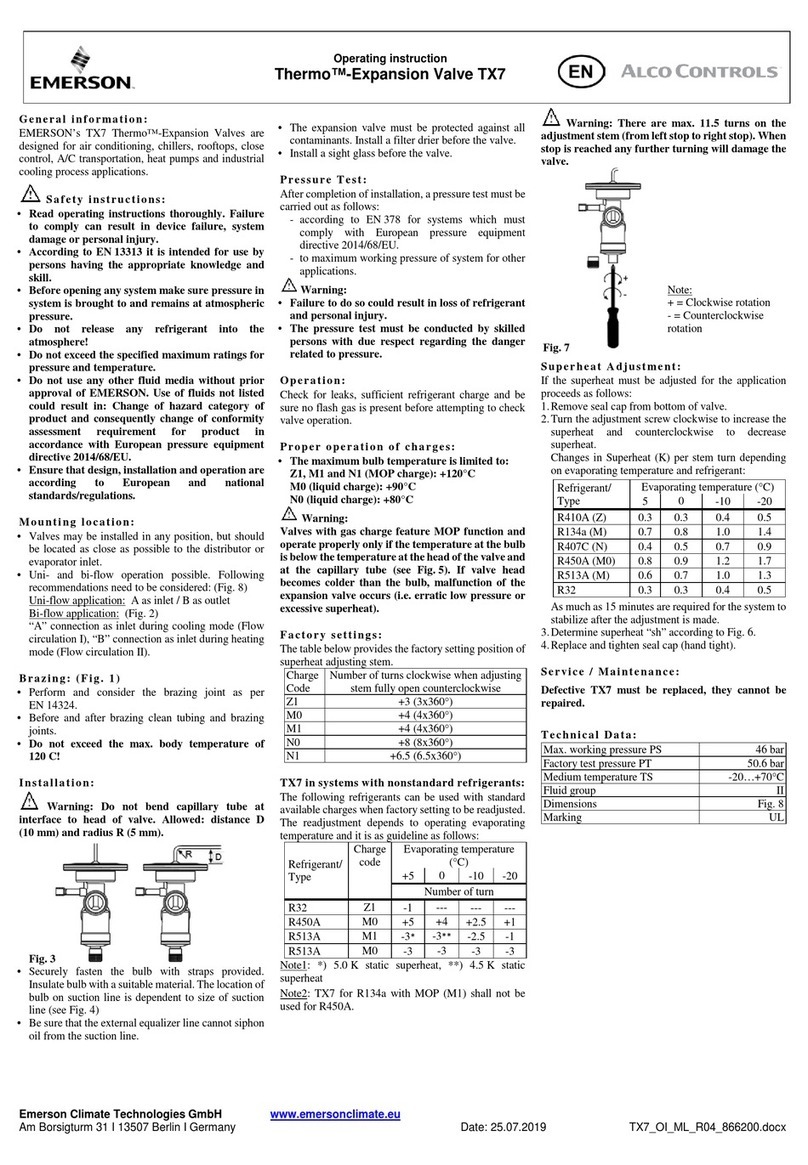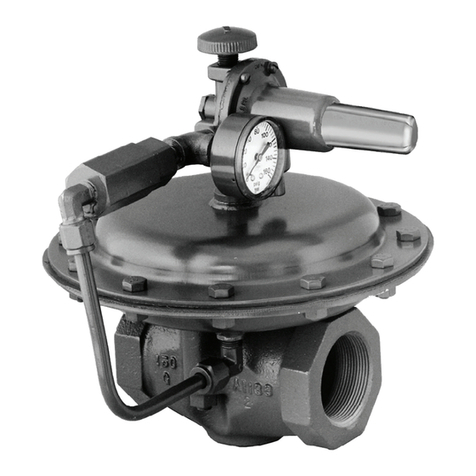
3
KTM SERIES E01 TRUNNION MOUNTED BALL VALVE
INSTALLATION AND MAINTENANCE MANUAL
4.3 Assembly
After removing all parts from the valve, wipe
the dust and clean it. After removing the dust
and grime, ensure that there is no scratch on
surface sealing of the ball and seat and stem
assembly, replace any defective or obviously
worn parts; no scratches should be on the
junction and on the surface of the seats of the
body and cap; Assemble in the following order:
• Put the spring, seat (seat holder, O-ring), ball,
anti-static spring into the body, put gasket
into the locating recess of the body.
• Put the ball into the body.
• Mount O-ring (if any) on the stem, then put
stem bearing on the stem.
• Insert upper stem into the upper stem hole,
the stem top is in 'off' position, then insert it
into the ball.
• Put the spring, seat (seat holder, O-ring) into
the left body, combine the surfaces between
body and cap.
• Tighten the nuts uniformly and symmetrically.
• Mount the cap gasket (O-ring), mount lower
stem bearing on lower stem, insert lower
stem into lower stem hole.
• Assemble upper stem in place, then mount
thrust bearing, gland packing or O-ring,
gasket, flange, gland on stem, gland flange in
order, screw in gland bolts and tighten. Screw
the bolts by hand, then use the tool to tighten
accordingly.
NOTE
When tightening the bolts, do not tightly tighten
one by one, this will potentially misalign the
gland flange and gland packing, and may cause
leakage. The right way should be, slightly tighten
one, then do another one, and so forth, until
the gland flange and gland are compressed to
ensure the uniform and aligned compression.
Turn the stem to ensure a smooth rotation.
Please refer to gland flange and center flange
tightening torque matrix tables in Section 5.
• Mount the stopper, resilient retainer, lever; if
the valve has manual operator, then mount it
last. This completes the assembly process.
4.4 Test method: The test should be done
according to the test pressure and holding time
of the relevant standards. For the pressure
test, we recommend the following methods:
• Shell test: close both ends of the valve,
leaving it in the half open state, inject the
media (liquid) with the required pressure,
after holding for some time, check the
junction, gland packing and shell for leakage.
• Liquid high-pressure closure test: close both
ends of the valve, leaving it in the half open
position, fill it with the media (liquid) with
the required pressure from one end, close
the valve, making the cavity be open to the
atmosphere, check leak detection port for
media leakage.
• Gas low-pressure closure test: close both
ends of the valve, leaving it in the half open
state, provide with the gas with required
pressure from one end, close the valve,
making the cavity be open to atmosphere,
check leak detection port for gas within the
stipulated time. Judging if valve qualified or
not should be based on relevant standards.
• No visible leakage is allowed for strength
test, low-pressure gas seal test and high-
pressure seal test within stipulated time
(standardized materials seat).
• Seal the valve with the sealing plate after
pressure test; if it is a water pressure test,
dry residual moisture content on the surface,
regarding carbon steel valve, paint, anti-rust
and oil then. Install sealing plate.
4.2 Disassembly
4.2.1
NOTES
Pay attention to the following points when
disassembling the valve:
• Fully relieve the valve cavity. Even if the pressure of
the piping has been discharged and there is still the
possibility of residual pressure left in the valve. The
valve must be opened and closed several times to
fully release the pressure in the cavity. After making
sure there is no residual pressure, the valve can be
removed from the pipeline.
• If the media is harmful for humans, or is
inflammable and explosive, make sure that no
residual media is left inside of the valve (especially
in the cavity). Then fully inject water inside to clean;
after making sure there is no residual media,
remove it from the pipeline; then fully open and
close the valve several times.
4.2.2 Disassembly method
• Rotate the stem (4) clockwise, positioning the
ball to the 'off' position.
• Remove the lever (or gearbox), remove the
elastic ring and stopper.
• Loosen the gland bolt (23), remove the gland
flange (16) and gland (15).
• Loosen the lower cover bolt (23), remove the
lower cover (20), lower cover gasket (10),
adjusting shim (22), thrust bearing (12), pull
out the lower stem (5), remove the gasket
(O-ring) and the lower stem bearing
• Loosen the flange coupling screw, remove the
flange, flange gasket, adjusting shim, thrust
bearing (11).
• Pull out upper stem (4), remove O-ring (9) or
gland packing (13), upper stem bearing (11).
• Loosen the coupling screw, separate the
body and cap, remove the ball (3), seat (6),
seat retainer (7), seat spring (8), flat or spiral
springs, junction gasket (10) (O-ring) from
the body. Be careful not to collide nor drop
the ball and seat, to avoid damaging the
sealing surface.
• Remove the seat, seat holder, seat seal
washer, flat or spiral springs.
• If the valve has a manual operator, then
during the disassembling, the manual
operator shall be removed first.
Once all the above is complete, the disassembly
can be considered to be finished.

